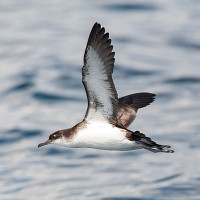Descrição
Sited in the Firth of Forth, rising 106 metres above sea level, Bass Rock could easily be mistaken for an iceberg from a distance. In fact, this immense carboniferous rock is given its white glaze by the thousands of Ganso-patola – 150,000 in the peak breeding season – that nest there. It is the largest Ganso-patola colony in the world. The colony is accessible in fair weather by boat from North Berwick harbour. In addition to Ganso-patola, during the crossing you may see shearwaters, Papagaio-do-mar, Arau-comum, Torda-mergulheira and seals. The latin name for Ganso-patola, sula bassana, derives from this location.
Detalhes
Acesso
By inflatable boat from Scottish Seabird Centre or rigid craft from Sula boats, both on North Berwick harbour. The boats do not land on the island. The trip is 5 km each way. Typical price £27 adult, £12 child. The Scottish Seabird Centre also offers exclusive Bass Rock landing trips for £135 Per person called Bass Rock Experience. See links below.
Terreno e Habitat
Desfiladeiro/precipício , MarCondições
MontanhosoCaminho circular
Nãoé útil um telescópio?
NãoBoa temporada de observação de aves
PrimaveraMelhor hora para visitar
PrimaveraCaminho dificil
Acessível por
BarcoAbrigo/plataforma deobservação de aves
NãoLigações
- Bass Rock on Wikipedia
- Tickets Bass Rock Experience
- Tickets Bass Rock boat trip by Scottish Seabird Centre
- Tickets Bass Rock boat trip by Sula




